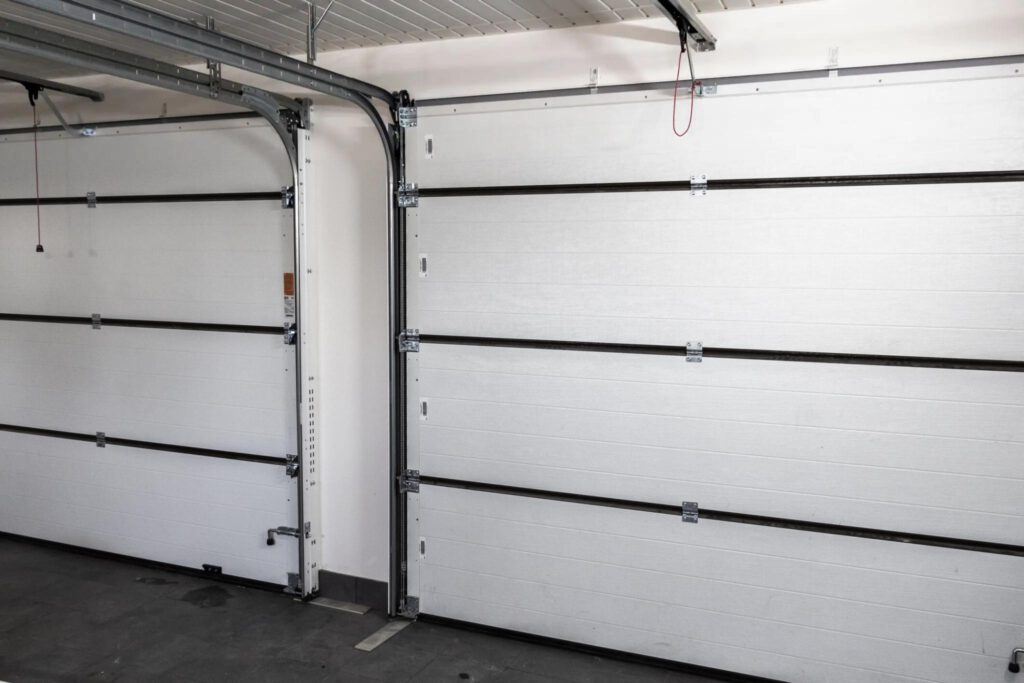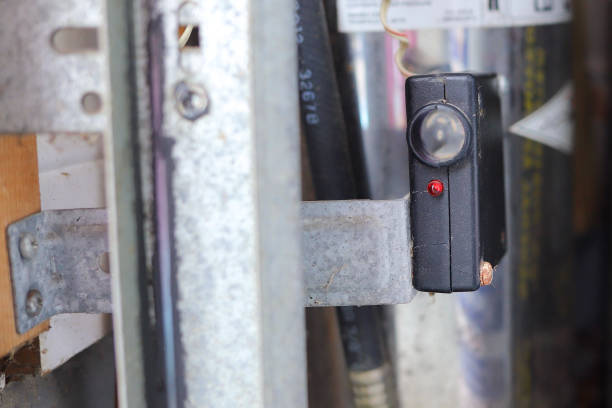Garage doors are an essential part of any home, providing convenience and security. However, without proper safety measures, they can pose a risk to both property and personal safety. This is where garage door safety sensors come into play. In this ultimate guide, we will explore the importance of these sensors, how they work, the different types available, and provide a step-by-step guide to installing them. By the end of this article, you will have all the knowledge you need to ensure a secure home with garage door safety sensors.
Importance of Garage Door Safety Sensors
Garage door safety sensors are crucial for the protection of your home and loved ones. These sensors are designed to detect any obstructions or movement in the path of a closing garage door, preventing it from coming into contact with people, pets, or objects. Without these sensors, a closing garage door can cause severe injury or even fatality.
By installing garage door safety sensors, you can have peace of mind knowing that your family and belongings are protected. These sensors act as an additional layer of security, ensuring that your garage door operates safely and efficiently.
Understanding How Garage Door Safety Sensors Work
Garage door safety sensors work on a simple principle: they emit an invisible beam of light that spans the width of the garage door opening. When the beam is interrupted, the sensor sends a signal to the garage door opener, causing it to stop or reverse its action.
Each sensor consists of a transmitter and a receiver. The transmitter emits the beam of light, while the receiver detects the presence or absence of the beam. If an object or person breaks the beam, the receiver signals the garage door opener to halt its operation.
It is important to note that garage door safety sensors should be installed at a height where they can detect any obstructions, such as a child or pet, in the path of the closing garage door. This ensures maximum safety and prevents accidents.
Types of Garage Door Safety Sensors
There are two main types of garage door safety sensors: photoelectric sensors and mechanical sensors.
- Photoelectric Sensors: Photoelectric sensors use a beam of light to detect obstructions. These sensors are typically mounted on the sides of the garage door, near the floor. When the beam is interrupted, the door stops or reverses its movement. Photoelectric sensors are commonly used in residential garage doors.
- Mechanical Sensors: Mechanical sensors, also known as pressure sensors, use physical pressure to detect obstructions. These sensors are installed on the bottom of the garage door and can sense any resistance when closing. If resistance is detected, the door stops or reverses. Mechanical sensors are often used in commercial garage doors.
It is essential to choose the type of sensor that is suitable for your specific garage door system. Consult your garage door manufacturer or a professional installer to determine the most appropriate option for your needs.
Tools and Materials Needed for Installation
Before you start the installation process, ensure that you have the necessary tools and materials. Here is a list of what you will need:
- Garage door safety sensor kit (includes sensors, brackets, and wiring)
- Screwdriver
- Drill
- Measuring tape
- Wire stripper
- Wire connectors
- Electrical tape
- Pencil or marker
- Step ladder
Having these tools and materials ready will make the installation process smoother and more efficient.
Step-by-Step Guide to Installing Garage Door Safety Sensors
Now that you have gathered all the necessary tools and materials, it’s time to begin the installation process. Follow these step-by-step instructions to install garage door safety sensors:
- Step 1: Prepare the Garage Door: Before installing the sensors, make sure the garage door is in the fully open position. This will provide easy access to the necessary areas.
- Step 2: Determine Sensor Placement: Identify the ideal location for mounting the sensors. Refer to the manufacturer’s instructions for specific guidelines. Generally, the sensors should be mounted on each side of the garage door, about 6 inches above the floor.
- Step 3: Mark the Mounting Holes: Use a pencil or marker to mark the positions where the sensor brackets will be mounted. Ensure that the marks are level and aligned on both sides of the garage door.
- Step 4: Install the Sensor Brackets: Using a drill, create pilot holes at the marked positions. Then, attach the sensor brackets securely using screws provided in the kit.
- Step 5: Install the Sensors: Insert the sensors into the brackets, making sure they are aligned properly. Secure the sensors in place by tightening the screws on the brackets.
- Step 6: Connect the Wiring: Follow the manufacturer’s instructions to connect the wiring from the sensors to the garage door opener. Use wire strippers to remove the insulation from the wire ends, and then use wire connectors to join the wires securely. Finally, wrap the connections with electrical tape for added protection.
- Step 7: Test the Sensors: Close the garage door and verify that the sensors are working correctly. Wave an object, such as a broomstick, in front of one of the sensors to interrupt the beam. The door should stop or reverse its movement immediately. Repeat the test with the other sensor to ensure both are functioning properly.
- Step 8: Finalize the Installation: Once you have confirmed that the sensors are working correctly, tidy up the wiring and secure it in place using clips or adhesive hooks. Make sure the wiring is not dangling or at risk of being damaged.
Congratulations! You have successfully installed garage door safety sensors. Your garage door is now equipped with an essential safety feature that will protect your family and property.

Testing and Troubleshooting Garage Door Safety Sensors
After installing garage door safety sensors, it is crucial to regularly test and troubleshoot them to ensure they are functioning correctly. Here are some tips for testing and troubleshooting:
- Regular Testing: Periodically test the sensors by waving an object in front of them while the garage door is closing. If the door stops or reverses as expected, the sensors are functioning properly. If not, check for obstructions or misalignment of the sensors.
- Cleaning the Sensors: Dust, dirt, or debris can obstruct the sensors’ beam, leading to false readings. Clean the sensors regularly using a soft, lint-free cloth to maintain their effectiveness.
- Adjusting Sensor Alignment: If the garage door does not close or reverse when an object is in the path, the sensors may be misaligned. Gently adjust the sensors until the beam is unobstructed and the door operates correctly.
- Checking the Wiring: Inspect the wiring for any signs of damage or loose connections. Make sure the wiring is securely connected to both the sensors and the garage door opener.
By regularly testing and troubleshooting your garage door safety sensors, you can ensure that they are always in optimal working condition, providing reliable protection for your home.
Additional Safety Measures for Garage Doors
While garage door safety sensors are an integral part of ensuring a secure home, there are other safety measures you can take to enhance their effectiveness. Here are some additional precautions to consider:
- Educate Your Family: Teach your family members, especially children, about the potential dangers associated with garage doors. Emphasize the importance of keeping fingers, hands, and other objects away from the moving parts.
- Install a Garage Door Timer: A garage door timer can be programmed to automatically close the door after a set period. This prevents the door from being left open unintentionally, reducing the risk of unauthorized access or accidents.
- Regular Maintenance: Keep your garage door and its components in good working condition by performing regular maintenance. Lubricate moving parts, inspect cables and pulleys, and tighten any loose screws or bolts.
- Secure Remote Controls: Keep garage door remote controls out of reach of children and away from potential unauthorized users. Consider using a keychain remote or a keypad entry system for added security.
By implementing these additional safety measures, you can create a secure environment for your family and minimize the risk of accidents or intrusions.
Professional Installation vs. DIY Installation
When it comes to installing garage door safety sensors, you have the option of hiring a professional or doing it yourself. Here are some factors to consider:
- Professional Installation: Hiring a professional installer ensures that the sensors are installed correctly and according to industry standards. Professionals have the knowledge and experience to handle various types of garage door systems, ensuring maximum safety and efficiency. Additionally, professional installation may come with warranty coverage.
- DIY Installation: If you have the necessary skills and tools, you can opt for DIY installation. This allows you to save on installation costs and have control over the entire process. However, it is essential to carefully follow the manufacturer’s instructions and guidelines to ensure proper installation.
Consider your level of expertise, time availability, and budget when deciding between professional installation and DIY. If you are unsure, it is always recommended to consult with a professional to ensure the job is done correctly.
Maintenance and Care for Garage Door Safety Sensors
To maintain the effectiveness of your garage door safety sensors, regular maintenance and care are essential. Here are some tips to keep your sensors in optimal working condition:
- Clean the Sensors: As mentioned earlier, clean the sensors regularly using a soft, lint-free cloth. This prevents dust or debris from obstructing the beam and ensures accurate detection.
- Check the Alignment: Periodically check the alignment of the sensors. If they become misaligned due to accidental bumps or movement, gently adjust them until the beam is unobstructed.
- Inspect the Wiring: Regularly inspect the wiring for any signs of damage or wear. If you notice any issues, such as exposed wires or loose connections, address them immediately.
- Follow Manufacturer’s Guidelines: Always refer to the manufacturer’s guidelines for specific maintenance recommendations. This ensures that you are following the appropriate procedures for your particular garage door safety sensor model.
By investing time and effort into maintaining and caring for your garage door safety sensors, you can extend their lifespan and ensure their continued functionality.
Conclusion: Ensuring a Secure Home with Garage Door Safety Sensors
Garage door safety sensors are a crucial component of a secure home. By understanding their importance, how they work, and the installation process, you can take the necessary steps to protect your family and property. Remember to regularly test and troubleshoot the sensors, implement additional safety measures, and consider professional installation when necessary. By following these guidelines and properly maintaining your garage door safety sensors, you can enjoy the convenience and peace of mind that comes with a secure home.
For professional installation or further assistance with your garage door safety sensor needs, contact Southern Home Creations. Our team of experts is dedicated to providing top-quality garage door service in Suwanee, GA and ensuring the safety of your home.

